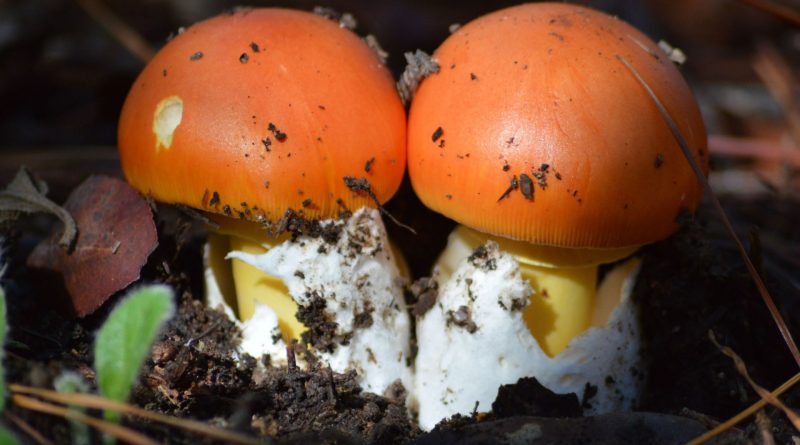Amanita caesarea
Amanita caesarea
The good egg (Amanita caesarea (Scop.) Pers., Synopsis Methodica Fungorum (Göttingen) 2: 252 (1801)) is one of the most appreciated and sought edible mushrooms.
Systematics –
From a systematic point of view it belongs to the Eukaryota Domain, Mushroom Kingdom, Basidiomycota Division, Basidiomycetes Class, Agaricales Order, Amanitaceae Family and then to the Amanita Genus and to the A. Caesarea Species.
Etymology –
The epithet Amanita seems to derive from the Greek Amanos, a mountain between Cilicia and Syria, where they abounded, while the specific term derives from the Latin Caesareus = of the Caesars emperors. They are synonyms Agaricus aurantiacus Bull .; it is known by the common names: Ovolo, Voita, Vrigliuocciudu.
Geographic Distribution and Habitat –
The Amanita caesarea proliferates in the slightly dry and windy clearings of the sunny forests, but it can also be found in isolated specimens even in dense woods and darker ravines. It is a sometimes rare fungus that grows mainly in chestnut and oak woods and sometimes under the pines. It is located at an altitude not exceeding 1000 meters. This fungus only bears mild temperatures and is widespread in the south of the Italian peninsula while it is being rarefaced as it rises towards the north. The Amanita caesarea unlike many fungal species, which require high humidity, prefers a dry climate.
Description –
The good egg is characterized by a decidedly orange hat, initially enclosed in the white primordial veil (similar to an egg, hence the name); with the growth it assumes the spheroidal shape, therefore flat, with dimensions up to 20 cm of diameter; the edge of the hat is marked by furrows in the direction of the slats that are dense, yellow, free to the stem; present numerous lamellulae. The stem is cylindrical, yellow, with height between 9 and 15 cm. It has a membranous and yellow ring. The volva is white, persistent, smooth, fleshy and free on the stem. The meat of Amanita caesarea is white, tender, fragile and unchanging when cut. The spores are oval, white tending to yellow in bulk, not amyloid, of 10-12 x 6-7 μm. it has a faint smell, not particular and sweet taste.
Cultivation –
It does not result among the cultivated mushrooms as well as the other few symbionts that are produced in a controlled way (and not without difficulty).
Uses and Traditions –
The delicacy of the Amanita caesarea led the ancient Romans to call it “Food of the Gods” and to protect the woods in which it reproduced. It is an excellent mushroom both cooked and raw in salads. It is often referred to as the best edible mushroom, but there are discordant opinions in this regard, as some mycologists consider this species far inferior to others from the gastronomic point of view, ie without any particular smell and taste.
As a good ecological and food safety rule, the Amanita caesarea should be collected only with the hat well opened, to allow the spores to disperse and therefore allow reproduction. In fact, the law prohibits the collection of eggs in a still closed form, also because it is easier to confuse with other poisonous-deadly species (most deaths are due to this fatal error) and cutting longitudinal section of the closed mushroom is not enough ovolo to discriminate it from other species.
Preparation Mode –
The Amanita caesarea lends itself to be preserved dried in oil or vinegar. This mushroom is consumed by many even eaten raw with salad.
Guido Bissanti
Sources
– Wikipedia, the free encyclopedia.
– Cetto B., 2008. I funghi dal vero, Saturnia, Trento.
– Pignatti S., 1982. Flora of Italy, Edagricole, Bologna.
– Conti F., Abbate G., Alessandrini A., Blasi C. (edited by), 2005. An annotated checklist of the Italian vascular flora, Palombi Editore.
Warning: Pharmaceutical applications and alimurgical uses are indicated for informational purposes only and do not in any way represent a medical prescription; there is therefore no liability for their use for curative, aesthetic or food purposes.


